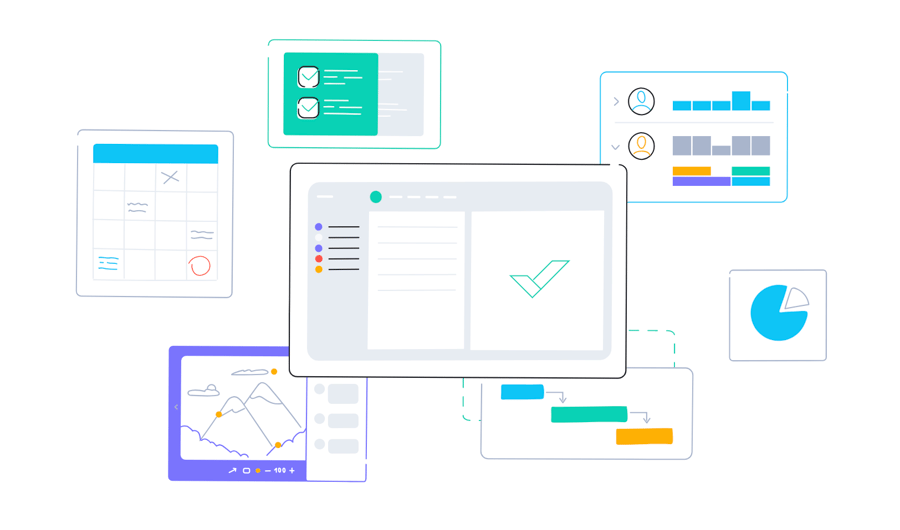Controlled Project Environment: The PRINCE2 Assurance

PRINCE2, a sought-after project management methodology offers the highest assurance. Projects usually deviate from their initial plans. They are distinctive, involve higher risks than regular operations, encompass various functions, have strict time constraints, and often face uncertainty. Meeting specific delivery deadlines can be critical, particularly in competitive markets.
Global businesses must operate in rapidly changing, volatile, uncertain, complex, and ambiguous (VUCA) environments. Renowned management expert Peter Drucker referred to these as “turbulent times,” while Nassim Taleb introduced the concept of “black swans” for improbable and unpredictable events.
In such circumstances, unmanaged projects often result in failure. Senior managers commonly express concerns about insufficient control, inadequate and untimely information, and the inability to make timely adjustments. Instead, they end up dealing with issues reactively, which can be too challenging or costly to resolve.
Uncontrolled projects frequently encounter unexpected issues such as poor risk management, delays, and cost overruns, leading to unmet expectations. Even in the present day, many projects suffer from a lack of control, resulting in wasted resources and diminished team morale, creating a cycle of poor performance and inefficiency. Fortunately, PRINCE2 provides guidance on establishing robust project governance and the appropriate level of control.
PRINCE2 Project Controls
The PRINCE2 approach implements controls across various management levels, including the board, the project manager, and the delivery teams.
The primary control mechanism is “management by stages,” where each project is segmented into distinct stages. At the conclusion of each stage, the project board assesses progress and accomplishments while verifying the project’s alignment with the overall strategy and its continued justification. The project board has three choices: to proceed, to revise the plan, or to terminate the project entirely.
These end-of-stage reviews, also referred to as “phase gates,” play a crucial role in maintaining senior management’s control and oversight of the project, especially in the context of constantly evolving business environments and competing priorities.
The second aspect of a project board’s control over a project involves regular reporting during each stage. The project manager generates reports at agreed-upon intervals, ensuring that the board has current and precise information regarding stage activities, progress achieved thus far, and any emerging issues or risks. These reports, known as highlight reports, also include the project manager’s projections for the remainder of the stage.
Another vital PRINCE2 control mechanism is its principle of managing by exception. Tolerances are established from the project’s outset for all project aspects, encompassing:
- Time
- Cost
- Quality
- Scope
- Benefits
- Risk
These six tolerances outline acceptable deviations above and below the plan’s target. They are established by the project board, granting the project manager the authority to make decisions without constantly seeking board approval, unless there is a forecasted tolerance breach. In such instances, the project manager is expected to raise an exception report. Tolerances also cascade downward, with the project board setting them for the project manager, who, in turn, sets them for the delivery team.
When combined, these three components provide the project board with an appropriate level of control. Comprehensive control is achieved by making decisions at the end of each stage regarding the project’s continuation, with the option for adjustments and changes in strategy. Throughout the stage, the project board is kept informed of progress through highlight reports. If any event during a stage leads to the breach of one or more tolerances, the project board is promptly alerted and can take corrective measures.
A Flexible Approach
Project controls should be tailored to meet the requirements of participants and stakeholders. The frequency and depth of reporting can be adjusted, with agreement reached between the board and the project manager during project initiation. Although information is crucial, excessive documentation is often unnecessary, and software can be employed to automate certain reporting tasks. In many instances, a straightforward email or verbal discussion can suffice. Boards can adopt a more hands-off approach while maintaining confidence that their projects are on course through the principle of managing by exception.
PRINCE2 does not prescribe a specific approach for implementing project controls. Organizations have the flexibility to adjust the number of stages and their duration according to the scope of work and associated risks. A straightforward project may necessitate just one delivery stage. When contemplating the most suitable method for controlling your project, consider the following questions:
- What is the expected project duration?
- How frequently should the project board meet to assess progress (stage duration)?
- What level of detail in highlight reports is necessary for the project board?
- How often should reports be provided?
- What reporting requirements does the project manager have from their team(s)?
- What level of tolerance should be permitted for time, cost, quality, scope, risk, and benefits?
Providing clear answers to these questions for all project stakeholders will enhance the likelihood of achieving the anticipated project outcomes.
Check our offers on PRINCE2® CERTIFICATION TRAINING COURSES and become one of the best in IT today.
Here at CourseMonster, we know how hard it may be to find the right time and funds for training. We provide effective IT Certifications that enable you to select the training option that best meets the demands of your company.
For more information, please get in touch with one of our course advisers today or contact us at training@coursemonster.com




Comments ()